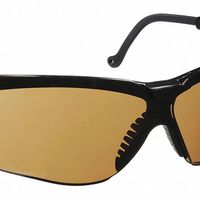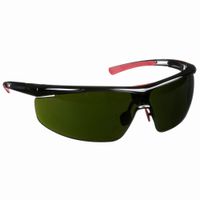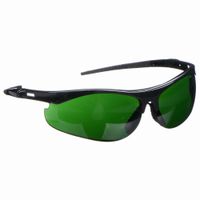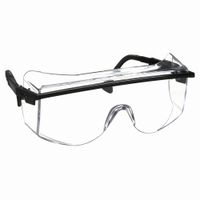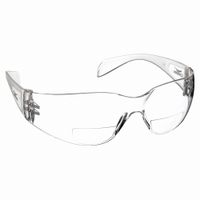Call +(254) 703 030 000 / 751 483 999 / 721 704 777
- Home
- Safety
- Eye Protection
- Safety Glasses
.....Read More
Frequently Asked Questions
What are the different types of safety glasses lenses?
Safety glasses lenses come in various types, each designed to offer specific protection and functionality:
1. **Clear Lenses**: These are the most common and are used for general-purpose protection. They provide excellent visibility and are suitable for indoor use where there is adequate lighting.
2. **Tinted Lenses**: These lenses reduce glare and are ideal for outdoor work. They come in various shades, such as gray or brown, to enhance contrast and reduce eye strain in bright conditions.
3. **Photochromic Lenses**: Also known as transition lenses, these adjust their tint based on the light conditions. They darken in bright sunlight and become clear indoors, offering versatility for workers moving between different environments.
4. **Polarized Lenses**: These lenses reduce glare from reflective surfaces like water or glass. They are beneficial for outdoor activities where glare can be a significant issue.
5. **Anti-Fog Lenses**: These are treated with a special coating to prevent fogging, which is crucial in environments with fluctuating temperatures or high humidity.
6. **Anti-Scratch Lenses**: These lenses have a hard coating that resists scratches, extending the life of the safety glasses and maintaining clear vision.
7. **UV Protection Lenses**: These lenses block harmful ultraviolet rays, protecting the eyes from potential damage during prolonged exposure to sunlight.
8. **Bifocal or Progressive Lenses**: These are designed for workers who need vision correction. They combine safety with the ability to see clearly at different distances.
9. **Mirror Coated Lenses**: These have a reflective coating that reduces glare and is often used in bright, sunny environments.
Each type of lens is tailored to specific needs, ensuring that workers have the appropriate protection and comfort for their tasks.
How do I choose the right safety glasses for my needs?
To choose the right safety glasses, first assess the specific hazards in your environment, such as impact, chemical splash, dust, or radiation. For impact protection, select glasses that meet ANSI Z87.1 standards, ensuring they can withstand high-velocity impacts. If chemical exposure is a concern, opt for goggles with indirect ventilation to prevent liquid penetration. For dusty environments, choose goggles with direct ventilation to reduce fogging while keeping particles out.
Consider the lens material; polycarbonate is lightweight, impact-resistant, and offers UV protection, making it suitable for most applications. For tasks involving welding or exposure to infrared or ultraviolet light, select lenses with appropriate shading or coatings.
Comfort and fit are crucial for prolonged use. Look for adjustable features like nose pads and temple arms to ensure a secure fit. Anti-fog and anti-scratch coatings enhance visibility and durability, especially in humid or abrasive conditions.
If you require prescription lenses, consider safety glasses with prescription inserts or over-the-glass designs. For environments with multiple hazards, hybrid models combining features like impact resistance and chemical splash protection may be necessary.
Finally, ensure compliance with relevant safety standards and regulations specific to your industry or region. Regularly inspect and maintain your safety glasses, replacing them if they become damaged or worn.
Can safety glasses be worn over prescription glasses?
Yes, safety glasses can be worn over prescription glasses. This is a common practice for individuals who require vision correction while also needing eye protection in environments where safety hazards are present. There are specific types of safety glasses designed for this purpose, known as "over-the-glasses" (OTG) safety glasses. These are designed with a larger frame and lens area to comfortably fit over most prescription eyewear without compromising the protective seal or comfort.
OTG safety glasses are engineered to provide the same level of protection as regular safety glasses, including impact resistance and protection from dust, debris, and chemical splashes. They often feature adjustable arms and a wraparound design to ensure a secure fit and full coverage. Some models also include anti-fog and anti-scratch coatings to maintain clear vision and durability.
When selecting OTG safety glasses, it is important to ensure they meet the necessary safety standards, such as ANSI Z87.1 in the United States or EN166 in Europe, which certify their effectiveness in providing adequate eye protection. Additionally, comfort and fit should be considered, as poorly fitting safety glasses can lead to discomfort and may not provide optimal protection.
For those who prefer not to wear two pairs of glasses, prescription safety glasses are another option. These are custom-made to include the individual's prescription within the safety lenses, offering a more streamlined and comfortable solution. However, they may be more costly and require a prescription from an eye care professional.
In summary, wearing safety glasses over prescription glasses is feasible and safe, with OTG safety glasses being a practical solution for those needing both vision correction and eye protection.
What are the benefits of amber lenses in safety glasses?
Amber lenses in safety glasses offer several benefits, particularly in environments where visibility and contrast are crucial. These lenses enhance contrast by filtering out blue light, which can cause visual noise and reduce clarity. This makes them ideal for low-light conditions or environments with poor lighting, as they improve depth perception and detail recognition.
Additionally, amber lenses can reduce glare from artificial lighting and computer screens, which helps in reducing eye strain and fatigue during prolonged use. This is particularly beneficial for tasks that require precision and focus, such as in manufacturing, laboratory work, or any setting where detailed visual tasks are performed.
Amber lenses also provide UV protection, safeguarding the eyes from harmful ultraviolet rays that can cause long-term damage. This makes them suitable for both indoor and outdoor use, offering versatility across different work environments.
Moreover, the psychological effect of amber lenses can be calming, as they create a warm visual tone that can enhance mood and reduce stress, contributing to overall workplace comfort and productivity.
In summary, amber lenses in safety glasses improve contrast and clarity, reduce glare and eye strain, offer UV protection, and enhance comfort, making them a valuable choice for various professional settings.
Are there safety glasses with built-in magnification?
Yes, there are safety glasses with built-in magnification, commonly known as bifocal safety glasses or safety readers. These glasses combine the protective features of standard safety eyewear with the convenience of reading glasses. They are designed to protect the eyes from hazards such as flying debris, dust, and chemical splashes while also providing magnification for tasks that require close-up work.
Bifocal safety glasses typically feature a bifocal lens design, where the lower part of the lens has a magnified segment, similar to traditional bifocal reading glasses. The magnification levels can vary, usually ranging from +1.0 to +3.0 diopters, allowing users to choose the level of magnification that best suits their needs.
These glasses are particularly useful in environments where both eye protection and the ability to see fine details are necessary, such as in construction, manufacturing, laboratories, and workshops. They help reduce the need to switch between safety glasses and reading glasses, thereby improving efficiency and safety.
Safety glasses with built-in magnification are available in various styles, including wraparound designs, adjustable frames, and anti-fog or anti-scratch coatings. They are often made from durable materials like polycarbonate, which is impact-resistant and provides UV protection.
When selecting bifocal safety glasses, it is important to ensure they meet relevant safety standards, such as ANSI Z87.1 in the United States or EN166 in Europe, to guarantee adequate protection. Additionally, users should consider factors like comfort, fit, and the specific magnification required for their tasks.
How do dark lenses in safety glasses help when working outdoors?
Dark lenses in safety glasses provide several benefits when working outdoors. Primarily, they reduce glare from sunlight, which can cause eye strain and discomfort. By minimizing glare, these lenses help maintain clear vision and focus, which is crucial for safety and efficiency in outdoor work environments.
Additionally, dark lenses offer protection against harmful ultraviolet (UV) rays. Prolonged exposure to UV radiation can lead to eye damage, including cataracts and other vision impairments. Safety glasses with UV protection help prevent these long-term health issues, ensuring the well-being of workers.
Dark lenses also enhance contrast and depth perception, which can be particularly beneficial in bright conditions. This improved visual clarity allows workers to better assess their surroundings, identify potential hazards, and perform tasks with greater precision.
Furthermore, dark lenses can reduce the risk of temporary blindness caused by sudden exposure to bright light, such as reflections off water, metal, or other reflective surfaces. This protection is essential for maintaining safety and preventing accidents in dynamic outdoor settings.
In summary, dark lenses in safety glasses provide essential protection against glare, UV radiation, and sudden bright light exposure, while enhancing visual clarity and comfort for outdoor workers.
What is the purpose of green lenses in safety glasses?
Green lenses in safety glasses are primarily designed to protect the eyes from specific types of light and radiation. They are particularly effective in environments where there is exposure to intense light sources, such as welding, cutting, or brazing operations. The green tint helps to filter out harmful ultraviolet (UV) and infrared (IR) radiation, which can cause eye damage over time. Additionally, these lenses reduce glare and enhance contrast, making it easier for workers to see their tasks clearly without straining their eyes.
In welding and similar activities, the bright light emitted can be damaging to the eyes, potentially leading to conditions like photokeratitis or "welder's flash." Green lenses help mitigate these risks by absorbing the intense light and reducing the overall brightness that reaches the eyes. This not only protects the eyes from immediate harm but also helps prevent long-term damage that can result from repeated exposure.
Furthermore, green lenses can improve visual comfort and reduce eye fatigue, which is crucial for maintaining productivity and safety in the workplace. By minimizing glare and enhancing visual clarity, workers can perform their tasks more efficiently and with greater accuracy.
Overall, the purpose of green lenses in safety glasses is to provide a protective barrier against harmful light and radiation, ensuring the safety and well-being of individuals working in high-risk environments.
